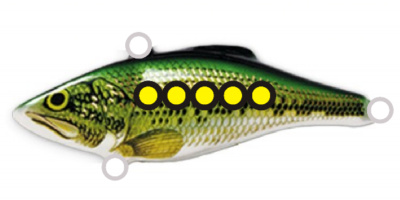The so
called egg dummies,
resembling fish eggs and formed on the various parts of the fish body, can be
found in the different lineages of mouthbreeding cichlids and egg clustering darters.
In cichlids, for example, patterns of yellowish, orangish and redish egg-spots,
developed on the anal fin of males, are most abundant (e.g., Henning & Meyer,
2012; Theis et al., 2012). Tobler (2006) has considered the role of sexual
selection in the evolution of egg-spots and hypotheses explained this
evolution, including the hypothesis of sensory exploitation (see Ryan, 1990).
The hypothesis of sensory exploitation can explain, in particular, the
shortcomings of previously suggested hypotheses on the evolutionary origin of
egg dummies and their further development.
An
unexpected hypothesis that any predory fish can respond to the egg dummies was
tested in the experiments described below.
Predatory Northern pike,
Esox lucius, were selected as usable model
fish. In the European ichthyofauna, there not egg-mimicking fish.
We examined
the effectiveness of original Rattlin’ Rapala wobblers (6 cm
length, Baby Bass color), marked ORR, in comparison with the experimental wobblers, marked
ERR. ERR wobblers were equipped with the bilateral black and yellow eye-spots
(5 flat spots, 4,8 mm diameter each) (see Fig.1) located along the flanks of
the lures.

Figure 1.
Rattlin’ Rapala wobbler equipped bilaterally with the 5 eye-spots
Using pike
as usable predators, lures of both types were presented alternately at the
estimated localities of these solitary fish. At each locality, 20 presentations
(cast and retrieving) of lures were made: 5 with ORR, 5 with ERR, 5 with ORR and 5 with ERR. Then an experimentator moved to
the other locality, where 20 presentations of the compared lures were made in
the reverse order. Within one 3-day session,
27 relatively small pike (30-40 cm standard length) were landed (and released)
in total. The numder of caught fish were distributed per earch ten lure
presentations for lures of both types, correspondingly.
Student
t-test was used to estimate the difference between the mean values of fish
number for lures of both types, ORR and ERR.
Pike preferred egg-marked lures (p < 0,05). Only one 3-day testing session
was made, thereafter ERR like lures were used in fishing with the steady
success.
Because the
foregoing lures are relatively large, only 11 large perch, Perca fluviatilis, (12-14 cm standard length) were caught in
parallel without their including into the calculations.
In the
Europen region, predaty fish never meet with the egg-mimicking fish. They
respond to the foregoing artificial lures beeing attracted by the bright
egg-like or eye-like spots.
Generally,
eye-spots and their combinations belong to the so called amimetic stimuli.
Their effectiveness is determined by the common mechanisms of visual
perception, common for animals and human. There are receptive units matched
with the roundish and sequent stimuli.
For more
information, please read Visual amimetic stimuli. An
introduction
Basic References
Henning F., Meyer A. 2012. Eggspot number and sexual
selection in the cichlid fish Astatotilapia
burtoni. PLoS ONE 7(8): e43695
Ryan, M.J. 1990. Sexual selection, sensory systems and
sensory exploitation. Oxford Surveys in
Evolutionary Biology 7,
157-195
Theis A., Salzburger W., Egger B. 2012. The function of
anal fin egg-spots in the cichlid fish Astatotilapia
burtoni. PLoS ONE 7(1): e29878
Tobler M. 2006. The eggspots of cichlids: Evolution through
sensory exploitation? Zeitschrift für
Fischkunde
...
Read more »




